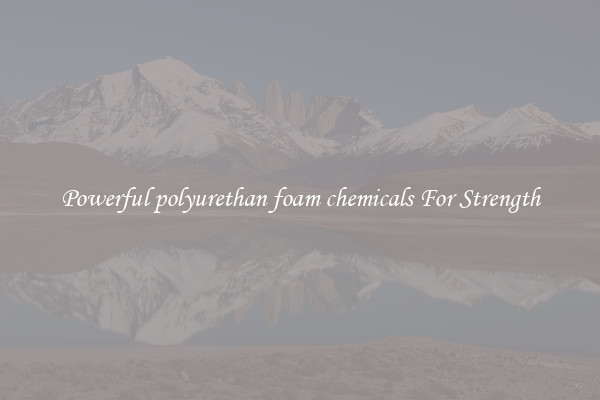Powerful polyurethan foam chemicals For Strength
Polyurethane foam is a versatile building material that is widely used in various industries such as construction, automotive, and furniture. It owes its popularity to its exceptional properties such as insulation, durability, and strength. These properties are mainly attributed to the powerful polyurethane foam chemicals used in its production.

One of the key chemicals used in polyurethane foam is diisocyanate, a compound that reacts with polyols to form the foam. Diisocyanate is known for its high reactivity and outstanding strength, making it a vital component in producing strong and durable polyurethane foam. By carefully controlling the ratio of polyols to diisocyanates, manufacturers can achieve different levels of foam density and compressive strength.
Polyols, another vital chemical used in polyurethane foam production, contribute to the foam's strength and flexibility. These compounds are derived from natural or synthesized materials and are responsible for the foam's resilience and structural integrity. With the right combination of polyols, manufacturers can customize the foam's properties to meet specific requirements in terms of strength and flexibility.
Additionally, blowing agents play a crucial role in determining the strength and density of polyurethane foam. These agents are responsible for creating the cellular structure within the foam, which not only provides thermal insulation but also enhances its strength and rigidity. The choice of blowing agents can significantly impact the foam's final properties, with some options resulting in high-density foams suitable for load-bearing applications.
Furthermore, additives are used in polyurethane foam production to enhance specific properties like flame retardancy, adhesion, and resistance to UV radiation. These additives can further improve the foam's strength, making it suitable for applications where durability and toughness are crucial.
It is important to note that the strength of polyurethane foam can be adjusted to meet specific requirements by modifying the concentration and combination of these chemicals. This flexibility allows manufacturers to produce foam with varying levels of strength suitable for diverse applications. For example, high-density polyurethane foam can be used in structural applications such as roof insulation or for providing support in construction projects.
In conclusion, the powerful polyurethane foam chemicals used in its production play a crucial role in determining its strength and durability. Diisocyanates, polyols, blowing agents, and additives all contribute to the foam's ability to withstand significant forces, making it a reliable and versatile building material. With their unique combination, polyurethane foam can be customized to meet the specific strength requirements of various industries, making it an essential material in today's construction and manufacturing sectors.

View details

View details

View details

View details







